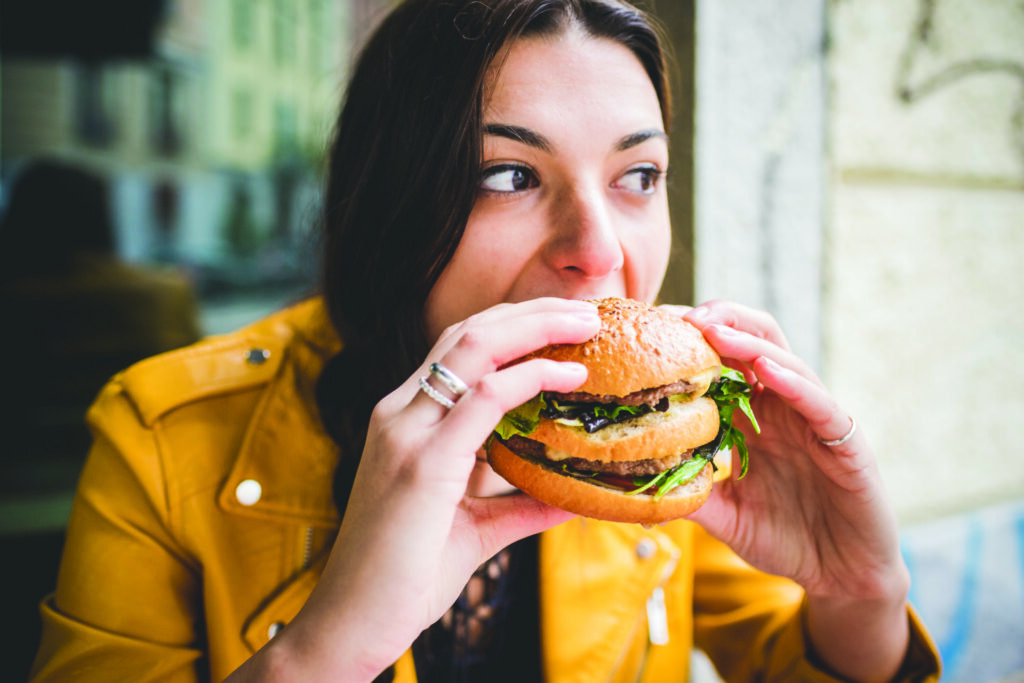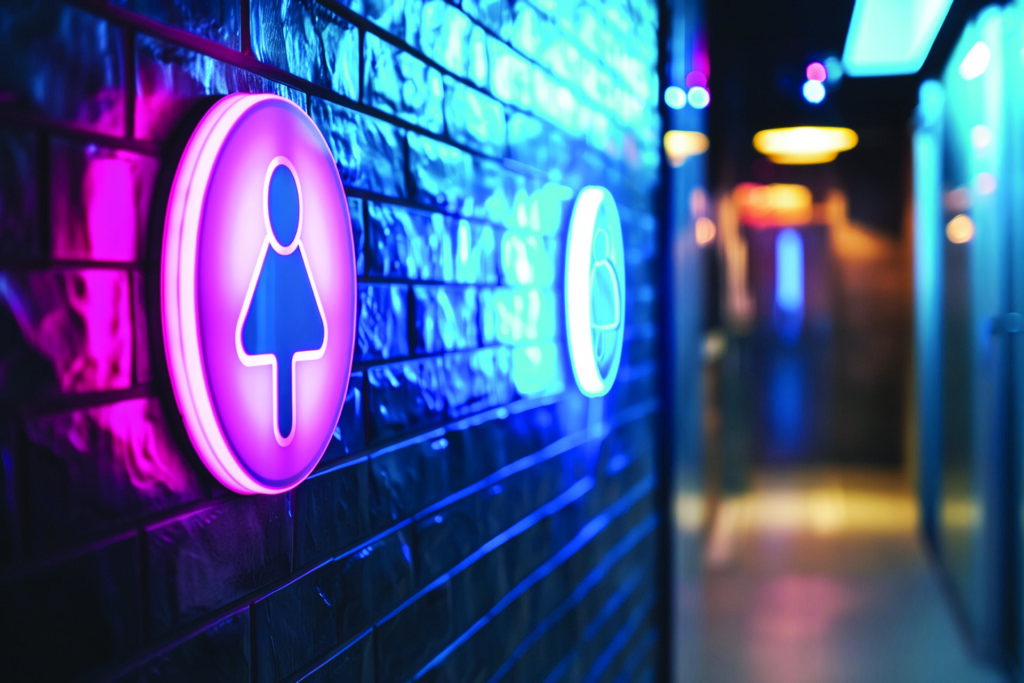The Secret Sauce: Transform your restaurant with customer experience insights.

With Jeff Doucette, General Manager, Field Agent Canada
In the shifting landscape of customer satisfaction, Jeff Doucette, General Manager of Field Agent Canada, is an expert.
In this wide-ranging interview, Jeff shares valuable insights into understanding and measuring customer experience, key findings from Field Agent’s “State of Customer Experience in Canada” report, and the unique preferences of Generation Z, a demographic reshaping the commercial sphere with their digital fluency and demand for authenticity. He also gives some sage advice on navigating the intricacies of living in a review-driven culture, where customer feedback holds unprecedented power in influencing business strategies.
Understanding customer experience and brand expectation…
MM: “Customer experience” is a term that’s thrown around on the daily in the foodservice industry. What does it really mean, and why is it so important?
Jeff Doucette: We’re also hearing a lot about “CX”, which seems to be the trendy thing to call it now, but to me it’s all the touch points that a customer or even a potential customer has with your business. So, you know, it could be things outside of your business that may turn them away before they even get in the door, like the cleanliness of the parking lot, a line outside the door or online ratings and reviews. The most important factor in customer experience is whether your brand and the experience you give your customers line up, and whether or not your promise is being fulfilled.
If you take movie theatres—the customer experience expectation is probably a much narrower band. It’s going to smell like popcorn, you hope that the line is short, the theatre is the right temperature, the show has good sound, and the seat is comfortable. You know what it is and it’s generally consistent. But in the restaurant industry, you have white tablecloth dining on one end of the spectrum and a hot dog vendor on the other, so customer experience points are different, and the expectation is different.
MM: Right, but how do you communicate and ultimately deliver within that broad spectrum?
JD: It’s about the relative value. A seven-dollar shawarma at a food cart on the side of the street might be a much better customer experience than a hundred-dollar meal in a restaurant, because it isn’t being judged the same way. Your customer experience is related to your brand promise, big or small, and your ability to deliver against that yardstick.
MM: How much does that alignment between your brand promise matter?
JD: I think it matters a ton because consumers are coming in with a preconceived notion of what they’re going to get. As a business owner, you’ve created that expectation from the name of your restaurant to the look and location, and your menu and price point—that’s the promise. Overpromising and underdelivering is the problem.
Most franchisors, for example, create a brand with an array of clear, specific operational and service principles that need to be lived up to in order to maintain that brand, and they’re pretty good at setting up that rigor to meet the expectations they set and training staff on those elements. They also tend not to tolerate franchisees that operate outside of those ideals.
Independent restaurants, on the other hand, might not always formalize the balance between the expectation and the brand. They may not think about what it means to come to their pub and what that experience is like and should be like. When you don’t have clear expectations, you have a gap in the customer experience, and that’s where services like a mystery shop can come in really handy. It can tell you whether or not you lived up to or fell short of your promise, and what you need to fix to get there.

Measuring success…
MM: You’re talking about the currency of experience, essentially, right? The negative currency would be disappointment and the positive would be surprise and/or delight, with satisfaction sitting in the middle. What are the key areas of Field Agent’s mystery shop assessment and what can operators learn from them?
JD: We measure using up to 12 satisfaction variables woven into our surveys—it’s a little like the dials on an old stereo in that the settings are different depending on the restaurant brand. If you have really good food and bad service, you will get a net negative score, just as you will if you have great service and bad food. It all comes down to the food and service in restaurants, because the alternative is eating at home. So, if I’m going to a restaurant and paying more for the same food, I had better be getting something over and above, which is where the service element becomes very important. It’s really not rocket science, but it does come down to very well-known, measurable principles. I think, to their detriment, a lot of businesses don’t measure it because maybe they don’t want to know
the answer.
We sometimes see a version of this with Field Agent clients. We recently finished a program for a customer and, as the results come in from a mystery shop, they’re available on our client dashboard. I got a call from our client, and they were upset because they couldn’t understand the results. They asked us to mystery shop their dine-in experience, but they were seeing takeout on the receipts. Well, it was because the staff were serving dine-in meals in takeout containers. So, the triangulation mystery shops provide can surface unexpected problems in a business. Even if you only have one restaurant, you can’t be there 24 hours a day. You’re not always seeing what’s happening when you’re not there.
This type of feedback gives you that reality check against your own expectations, so something like a mystery shop could be seen as a cost or it could be seen as an investment in the brand to make sure that you’re living up to the brand promise.
MM: How often does it happen that a mystery shop uncovers unforeseen problems in a restaurant business?
JD: Quite frequently, actually. The free-form commentary at the end of the mystery shop survey can be particularly insightful. We ask mystery shoppers to respond to the question: “If you owned this restaurant, what would you want to know based on your experience here today?” You can get a lot of really awesome feedback this way—negative and positive—because mystery shoppers, as customers, are seeing what’s happening from a different angle. People who are seated are seeing a whole other layer of what’s happening in that restaurant.
MM: Do you have any advice as to how negative feedback should be shared and/or implemented?
JD: It’s definitely not the Gordon Ramsay approach of throwing things around the kitchen. With mystery shops, operators receive a photo of the receipt, so they can often see who the server was and trace it back to an individual staff member and repeat mystery shops will show if a restaurant’s problems are clustered around a single person. But even then, that feedback should be approached as an opportunity to talk to the whole team about the expectation on a particular point as it relates to the brand. In the consumer-packaged goods industry, you live by the brand, and you want a brand that instantly conjures up the idea of what it should mean. At an individual restaurant level, the coaching for most things that will pop up in our mystery shop, shouldn’t be, “Rebecca did this wrong, so I’m going to talk to Rebecca.” It should be more like, “Hey team, we had a mystery shop recently and here’s the feedback and a reminder that our goal is to visit each customer at their table within a minute of them sitting down.” So, here’s the expectation, this is what our brand means, and this is how we deliver it. Ideally, it’s a teachable moment for the whole staff and an opportunity for the management to reinforce the expectation for the whole team.
MM: Are there ways operators can integrate quality assurance programs like mystery shops into their restaurants as a positive aspect of the culture?
JD: Mystery shop programs are also a recognition opportunity for managers to acknowledge great service or results and show staff some appreciation. It could even be as simple as a $10 gift card. Regular mystery shops provide owners and managers with an objective opinion that they can have a conversation with their team about, good or bad. It all comes down to the idea that what gets measured, gets done correctly.
Quality assurance around customer experience builds some autonomy and pride in the team, that they can handle it and that they know what they’re doing. This is so important. There are companies who micro-script every aspect of their jobs, and who wants to work in an environment where a machine is beeping at you every four minutes to go check the washroom? You don’t have to make it so simple and so…silly. You just want to reinforce the brand promise.

The “State of Customer Experience in Canada” report…
MM: At RC Show 2024, Field Agent presented a custom research report, “State of Customer Experience in Canada.” Did you prepare it specifically for the show audience?
JD: This was a specific report we pulled together for RC Show where we tried to think about what’s important in the industry and provide insights that we were able to glean by using a tool like Field Agent. We did a two-stage survey looking at what’s happening in the restaurant industry generally to form an opinion base. We surveyed 1,000 people about their general interactions with foodservice and talked to 1,000 respondents after they’d visited a restaurant on their own—where we weren’t sending them in to do a mystery shop. We wanted to understand the current state of customer experience, so it was a mix of an opinion-style survey and a trends survey, with the additional value of opinion data gleaned from the experiences of 1,000 actual restaurant visits over a week or so.
MM: Did you collect the data with the Field Agent system?
JD: Field Agent is designed as a data collection tool. It’s a simple app, but it allows us to program surveys and push them out to our team of almost 300,000 field agents in Canada. We guide them through a particular survey across their whole experience. It could be an in-home survey you can answer while you’re watching TV, which is the method we used for the trends aspect of the report, or it could be an actual restaurant visit where we stage people through the experience. We’ll ask them to answer certain questions as they’re eating their meal, and we’ll ask for a photo of their meal and of their receipt. We’ll ask if they visited the washroom and whether it was stocked and clean. Information is collected on the app throughout the whole experience, and that information is sent back to our team and compiled on our dashboard.
Customers in our Mystery Shop Program can see it happen online, in near real-time. We also offer custom scorecarding, where Field Agent generates a scorecard and notifies the management team or whoever is designated to receive the results right after the mystery shop is completed.
MM: Are there any other aspects of customer experience that can be measured?
JD: You can also use mystery shops as front-end quality assurance testing, which is really interesting. We worked with a 300-store operator on a new product launch and were able to identify challenges in the execution coming right off the line. We do a lot of programs where we go out in the first day or two of a launch to see what the food is like coming off the line and provide feedback on any operational issues so they can be quickly identified and resolved. In this case, the company called a network-wide Zoom meeting to walk every restaurant manager through the process in order to fix it.
For new products or limited time offers, you have such a short amount of time to identify and address problems before your brand is impacted. This customer experience feedback is important because it’s focused on a critical, time-sensitive investment.
MM: Can you share a few key customer service takeaways from your report?
JD: In the QSR space, with Dine-In customers we saw that there’s a customer expectation that, from the point they park their car to when they walk to the door, come inside the restaurant and interact with staff, they want a quicker and friendlier experience than what they’re getting. Going through the drive-through was getting better scores than actually going into the restaurant, and that seems like a miss. The full customer experience should happen within the building. When you have someone inside your space, you have an opportunity to give them the full brand experience, and the drive-through should be the “Coles Notes” of that experience.
My advice would be that if the experience of going and sitting down in your restaurant is not a part of your brand you want to perpetuate, close your dining rooms. If you’re not living up to your brand standard inside your building, you’re actually detracting from your brand, and you’re losing business.
We also learned that, when customers come into restaurants, they’re often unhappy with the level of cleanliness they’re seeing. So, if your dining room is slow, the staff aren’t engaged, and the restaurant isn’t that clean, why would your customers keep coming inside?
Even though dine-in customers might be a smaller percentage of your business, how many restaurants can afford to lose those people outright? If you take that volume out of the mix, is your restaurant still profitable? You have to balance those things, and there are lots of businesses out there that are really focused on drive-through and do it really well. Even if you maintain a small space, it still needs to live up to your promise.
Generation Z
MM: Have you noticed any differences in terms of customer experience expectation with Gen Z?
JD: Yeah. They’re looking for “better everything”, which is very interesting. They’re tougher on most of the metrics we put out there as well as on mystery shops. This could be tied to this generation’s technology cycle, with better and faster iPhones and other technologies that are improving and expanding at such an escalated pace—paying the same, but expecting more.
They also value unique, shareable experiences and are more likely to read and leave a review and do a TikTok review. Gen Z are definitely more empowered to share their opinions. They’ve been encouraged from a very young age to be vocal and to express their opinions and be more present in the moment, and they’re willing to share their experience and what they think. The whole concept of influence is born out of that.
MM: Have you encountered any restaurants that do a particularly great job of connecting with Gen Z?
JD: You know, there’s a restaurant here in Calgary that sells only chicken fingers. It’s called Strip Joint Chicken. You go in there and it’s decorated with neon, they have a pole, and they’re edgy with how they like to name their dishes. They’re also open late and the service is great because they’re catering to and directly targeting that crowd.
Outside of foodservice, it’s common for brands to focus specifically on a particular demographic, but you don’t see that as much with restaurants. It’s more like, “We’re going to be a burger joint, but we also have a brew bar…” I don’t think it’s a bad thing to have a restaurant where Boomers wouldn’t be caught dead but is great for Gen Zs.
Operating in a Review Culture…
MM: Restaurants have been living in a review culture for a long time. What can a service like a mystery shop do that online reviews can’t?
JD: Most negative online reviews are left by people who are pissed off, and restaurants may only have a few reviews because they’re hard to gather. You might only have seven reviews for your restaurant and four of them are from people who had issues right?
We bring a consistent program that brings a restaurant’s reviews to up to 50 or more current reviews. We won’t influence the review—if the service or the food is bad, it’s bad. Restaurants have to be willing to live with the honest review. But, what we will do, is get the restaurant that steady stream of thorough reviews. It’s not just “Five stars—Love this place!”, it’s going to be a minimum 30-word review with information that is helpful for the next customer and helps with their SEO. Restaurants shouldn’t worry about fixing bad reviews, but about maintaining a consistent flow of reviews that keep them fresh, with an adequate amount of information. That’s how people are making decisions.

Field Agent is a Restaurants Canada Preferred Partner.
To learn more about their mystery shopping programs for Restaurants Canada members and to download their State of Customer Experience in Canada FREE, please visit: fieldagentcanada.com/rc









